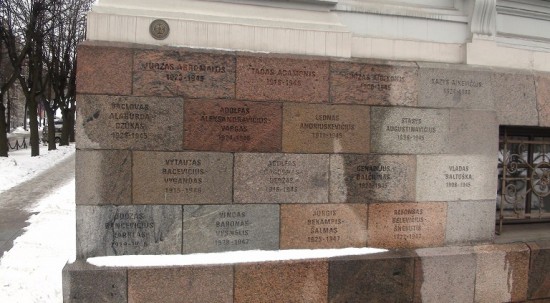Russian Lithuania itinerary: Top 10 sights
Lithuania was ruled by Russia for 170 years in two occupations (1795-1915 Imperial and 1940-1990 Soviet). While such history and Russian-led persecutions of Lithuanians has created animosity, it also left many reminiscences of that era in buildings and culture as well as a sizeable Russian minority. Here are top 10 ideas for Russian sights in Lithuania:
1. Take a peek inside the old Orthodox churches of the Eastern part of Vilnius Old Town, historically (15th-18th centuries) a Russian Orthodox area: the white Caucasian-style cathedral, the Holy Spirit monastery, and the lavish Saint Nicholas church.
2. Visit the KGB museum (Museum of Genocide Victims) in the former KGB building in Vilnius New Town to learn about the Soviet genocide and persecution of Lithuanians and why the Lithuanian-Russian relations are now strained. The surrounding Vilnius New Town district was developed in Russian Imperial era.
3. Explore the mighty Kaunas Fortress (1882-1915), one of the largest Russian Imperial fortresses ever built and certainly the best-preserved one. It is not a single building - its forts still surround the Kaunas city. 7th and 9th forts serve as museums but abandoned ones such as the 6th one may be even more atmospheric. Additionally, you may peek into the fortress cemeteries (with many Russian names) and abandoned barracks (districts of Šančiai, Freda, Panemunė).
4. Follow the taste of many modern-day Russians to splurge at Druskininkai, the mineral water resort developed under Russian Imperial rule. Russian Orthodox church still stands at a prominent location where all the main streets converge and a large share of Druskininkai visitors are Russian-speakers.
5. Visit the Kaunas New Town, developed as the center of the Kaunas fortress. The Sobor (Russian Orthodox cathedral of the garrison) became Catholic after the Russian troops departed but it still has the iconic Russian style.
6. Seek for the crumbling off-the-beaten-path Russian Old Believer villages and their wooden churches in Aukštaitija (such as Perelozai in Jonava District municipality). After the Old Believers refused to adhere to Orthodoxy reforms in Russia and became persecuted there (18th century) Lithuania granted them refuge and even though many have migrated to cities most still visit their village churches and cemeteries.
7. Visit Visaginas, a Soviet-built town where 55% of people are Russians moved in from the Soviet Union in the 1980s. The Russian language is still the lingua franca there. ~15 km from Visaginas there is an earlier Russian-redeveloped town Zarasai. Redesigned in Russian Imperial era (19th century) on a then-popular semicircular layout it was named "Novoaleksandrovsk" after czar Alexander; today 23% of Zarasai locals are ethnic Russians.
8. Go to the Pushkin museum at Markučiai manor in Southern Vilnius. This wooden palace amidst park has never been visited by the famous poet. However, owned by his noble relatives, it represents the life of 19th-century Russian nobility in Lithuania well enough.
9. Travel to the walled Russian Orthodox religious community in Mikniškės (Russian: Michnovo), Dzūkija region.
10. Listen to Russian music at Basanavičiaus street of Palanga seaside resort in summer evenings. Businessmen of Palanga try to appease the older Russians who like the resort since Soviet times so there are also Russian restaurant menus and most workers of the tourism sector speak some Russian.

Map of the top 10 Russian locations in Lithuania. ©Augustinas Žemaitis.













Leave a comment